
Altamira Gold Intersects Gold Mineralization Within a New Porphyry Body at Tavares Norte Target, Cajueiro District, Brazil
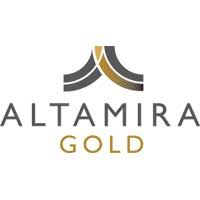
Altamira Gold Corp. (TSX-V: ALTA) (FSE: T6UP) (OTCQB: EQTRF) is pleased to report assay results from initial reconnaissance drilling at the Tavares Norte target, located within the Company’s Cajueiro District area, Brazil.
Highlights:
- Initial reconnaissance drilling at the Tavares Norte target, located 5.5km east of the Maria Bonita gold deposit, indicates the presence of a second mineralized porphyry body, which is geologically and geochemically very similar to the porphyry body that hosts the Maria Bonita mineral resource.
- Drill results from the two initial reconnaissance holes at Tavares Norte include intervals of 18.6m @ 0.4 g/t gold from 36m depth and 20m @ 0.3 g/t gold from 133m depth in TVN002 within a broader zone of 161.7 metres of lower grade gold mineralization.
- Further drilling will target the area to the east of drill hole TVN 002, where the gold-in-soil anomaly is increasing in strength.
- Altered and veined quartz porphyry rocks have also been logged in initial drilling at the Morro Verde target, 1.5 km east of Tavares Norte where results are pending.
- Drilling at the Maria Bonita gold deposit is ongoing. Drill hole MBA033 was completed to a depth of 497 meters and samples are being prepared for assay. Drill hole MBA034, collared 100m south of hole MBA033 is now in progress.
CEO Mike Bennett commented; “The results from the initial reconnaissance drilling at the Tavares Norte target are highly encouraging as they demonstrate the presence of a second gold mineralized porphyry body within the Cajueiro district. The geological and geochemical similarities to the Maria Bonita porphyry, together with the presence of strong alteration and sulfide mineralization, validates our model for the prospectivity of the east-west corridor extending through Maria Bonita. The Maria Bonita gold porphyry deposit is not unique within the Cajueiro district and we intend to focus additional drilling at Tavares Norte to better define the size of the porphyry body now identified there. Concurrently, ongoing drilling at Maria Bonita continues to intersect mineralized porphyry adjacent to and below the previously estimated mineral resource.”
CAJUEIRO DISTRICT
The Cajueiro district is located approximately 75km NW of the town of Alta Floresta in the state of Mato Grosso (Figure 1) in central western Brazil. The project is easily accessible by road, lies on open farmland and has grid power and a local water supply. Cajueiro is the most advanced of the key projects that Altamira controls in the region (Figure1).
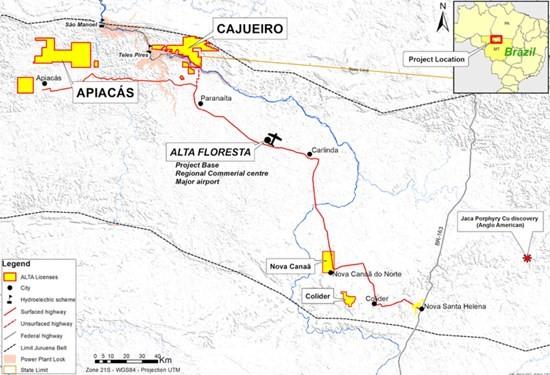
Figure 1: Location of Altamira Gold’s projects in the Alta Floresta Belt.
The Cajueiro district consists of two independently estimated gold mineral resources at Cajueiro Central and Maria Bonita, plus a series of eight additional untested exploration targets within a radius of 8km of Cajueiro Central.
The Cajueiro Central area has a current open pit resource1 of 5.66Mt @ 1.02 g/t gold for a total of 185,000 oz in the Indicated Resource category and 12.66Mt @ 1.26 g/t gold for a total of 515,000 oz in the Inferred Resource category (estimated using a cut-off grade of 0.25g/t Au and a gold price of US$1,500/oz).
The Maria Bonita open-pit resource consists of Indicated Resources of 24.19Mt @ 0.46g/t gold (for a total of 357,800oz) and Inferred Resources of 25.64Mt @ 0.44g/t gold (for a total of 362,400oz)2. These resources were calculated using a 0.2 g/t gold cut-off grade and a gold price of US$2,780/oz. These resources include near-surface saprolite Indicated Resources of 2.02Mt @ 0.59g/t gold (38,000oz) and Inferred Resources of 0.68Mt @ 0.40g/t gold (8,700oz).
The Maria Bonita porphyry gold deposit forms part of a district-scale portfolio of prospects that are interpreted as having a similar geological origin (Figure 2). The Cajueiro area is characterized by a 15km stretch of former alluvial gold workings along the Teles Pires river. The source of some of this alluvial gold is related to a pronounced east-west corridor of gold anomalies in soils and rock chips and a set of sub-cropping intrusions extending east-west over 8km, implying the presence of a long-standing and deep-seated crustal structure.
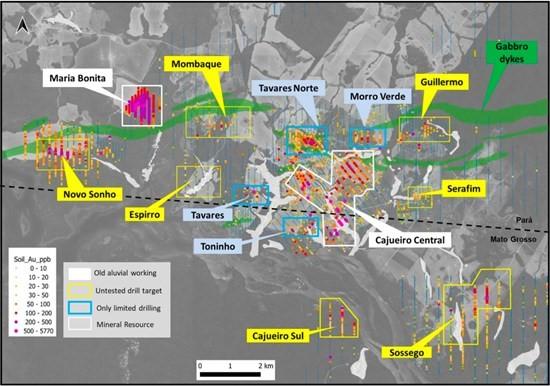
Figure 2: Cajueiro district mineral resources at Cajueiro Central and Maria Bonita (white labels) and prospects (blue labels with scout drilling, yellow labels not yet drilled). An alignment of six of the targets occur in close spatial association to a pronounced east-west fault corridor marked by later gabbroic dykes.
Tavares Norte Drilling Update
The Tavares Norte prospect is located 1km north-west of the Central resource area and 5.5km east of the Maria Bonita porphyry gold deposit. The prospect is defined by a gold-in-soil anomaly extending over an area of 1800 x 1300m. Previous surface rock chip grab sampling+ across the prospect returned grades of up to 7.8 g/t gold (see press release dated April 14, 2025).
Two drill holes (TVN001 and TVN002) were completed at the Tavares Norte target, located approximately 100 metres apart. Both holes intersected extensive zones of quartz porphyry and magmatic breccia, hosting sulphide mineralization, with very similar geological characteristics to the Maria Bonita porphyry.
+ By their nature, grab samples are not representative of the bulk metal content of a mineralized zone.
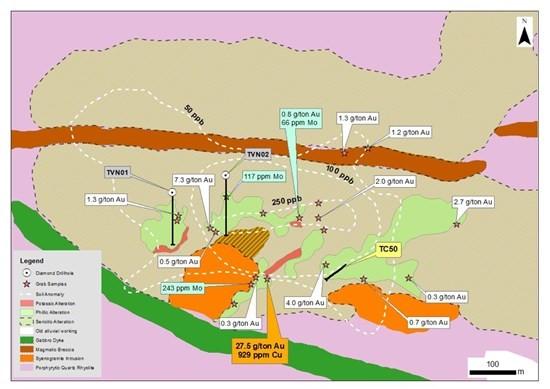
Figure 3: Tavares Norte drill holes in relation to the defined soil anomaly, surface rock chip samples and trench exposure.
Hole TVN002 was sited at the western end of the higher-grade section of the soil anomaly and was completed to a depth of 227m metres. The hole intersected 161.7 metres of quartz porphyry with quartz veining and abundant pyrite and magnetite, associated with potassic and phyllic alteration. The entire quartz porphyry interval, including zones of brecciated intrusive, returned 161.7m @ 0.2g/t gold (Figure 4).
The hole revealed gold mineralization in quartz veined, porphyry intrusive rocks with the entire quartz porphyry interval comprising 161.7m @ 0.2g/t gold within which 18.6m @ 0.4 g/t gold from 36m depth and 20m @ 0.3 g/t gold from 133m depth are the most notable (Table 1).
Hole TVN001 was drilled 100m to the west of TVN002 and intersected narrow intervals of low-grade mineralization including 3.3m @ 0.30 g/t gold from 11.0m depth and 1.0m @ 0.40 g/t gold from 61.0m depth. The hole cut wide intervals of quartz porphyry and magnetic breccia containing pyrite, galena, molybdenite, and sphalerite. This hole was collared to the west of the main gold-in-soil anomaly for logistical reasons at the time of drilling (Figure 3) and therefore did not intersect the main mineralized zone, which is interpreted as extending eastwards where further drilling is planned.
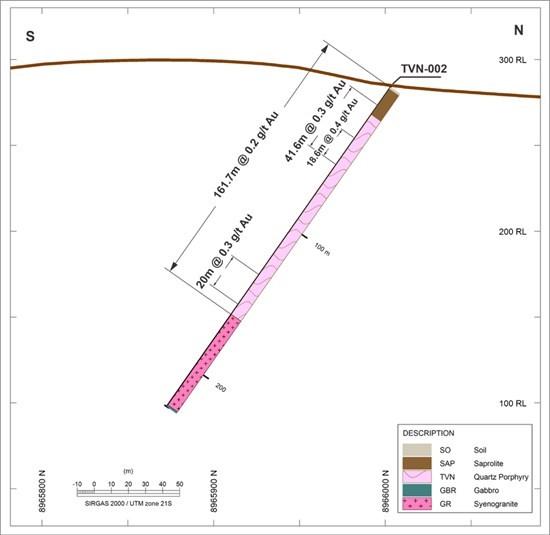
Figure 4: Cross section for drill hole TVN002.

Table 1: Main assay results for drill holes TVN001 and TVN002. All mineralization is hosted within altered quartz porphyry.
Altamira plans to conduct follow-up drilling at Tavares Norte to further delineate the porphyry system and test for higher-grade zones associated with magnetite-bearing quartz vein stockworks hosted in the quartz porphyry.
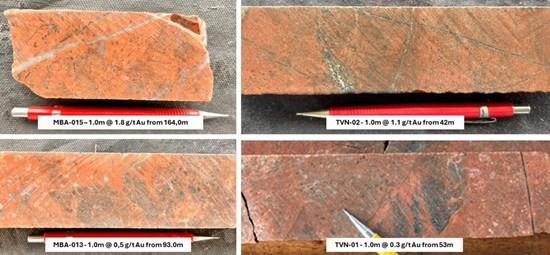
Figure 5: Typical quartz porphyry intrusive core from Tavares Norte (right) compared with the host rock to the Maria Bonita mineral resource (left).
Maria Bonita Drilling Update
The objective of the current drill program at Maria Bonita is to enlarge the footprint of the known mineral resource by drill testing for potential extensions to the existing resource, including its depth extent, and new satellite targets.
The first drill hole of the current program, MBA032, was completed to a depth of 546 metres and returned 395.5m @ 0.4 g/t gold from 44.5m depth in the same quartz porphyry intrusive that was intersected in previous drilling (see press release dated October 15, 2025).
Hole MBA033 was recently completed to a depth of 497m and core samples are in preparation for assay. Hole MBA034, which is collared 100m south of hole MBA032 and aims to test a deeper intercept below that hole, is underway.
Further drilling at Maria Bonita will continue to target the extension of higher-grade zones to depth and along strike.

Figure 6: Locations of drill holes at Maria Bonita from the past campaign (white) and the current campaign (yellow). The background shows interpreted major structures within the broad, trapezoid-shaped magnetic low that hosts the alteration and mineralization. The optimised pit outline is derived from the maiden mineral resource estimate2 (June 2025).
Qualified Person
Guillermo Hughes, FAIG and M Aus IMM., a consultant to the Company as well as a Qualified Person as defined by National Instrument 43-101, supervised the preparation of the technical information in this news release.
About Altamira Gold Corp.
The Company is focused on the exploration and development of gold projects within western central Brazil, strategically advancing five projects spanning over 100,000 hectares within the prolific Juruena Gold Belt-an area that has historically yielded over 6 million ounces of placer gold3. The Company’s advanced Cajueiro project contains two gold deposits. The central area comprises NI 43-101 resources of 5.66Mt @ 1.02 g/t gold for a total of 185,000 oz in the Indicated Resource category and 12.66Mt @ 1.26 g/t gold for a total of 515,000oz in the Inferred Resource category. In addition, the Maria Bonita gold deposit comprises additional open pit Indicated Resources of 24.19Mt @ 0.46g/t for a total of 357,800oz, and Inferred Resources of 25.64Mt @ 0.44g/t for a total of 362,400oz.
Ongoing exploration and fieldwork at Cajueiro indicate the presence of multiple porphyry gold systems, reinforcing its potential for district-scale development. These hard-rock gold sources align with historical alluvial gold production, highlighting the region’s exceptional gold endowment and potential scalability. With two independently established mineral resources, a highly prospective geological setting and a track record of significant discoveries, the Company is well-positioned to unlock further value across its extensive land package.
1NI 43-101 Technical Report, Cajueiro Project, Mineral Resource Estimate: Global Resource Engineering, Denver Colorado USA, 10thOctober 2019; Authors K. Gunesch, PE; H. Samari, QP-MMSA; T. Harvey, QP-MMSA
2 NI43-101 Technical Report, Mineral Resource for the Maria Bonita Prospect: VMG Consultoria, Belo Horizonte, Minas Gerais, Brazil. 12th June 2025; Author V. Myadzel
3 Juliani, C. et al; Gold in Paleoproterozoic (2.1 to 1.77 Ga) Continental Magmatic Arcs at the Tapajós and Juruena Mineral Provinces (Amazonian Craton, Brazil): A New Frontier for the Exploration of Epithermal-Porphyry and Related Deposits. Minerals 2021, 11, 714. https://doi.org/10.3390/min11070714
MORE or "UNCATEGORIZED"
Doubleview Extends High-Grade Domains at Hat: H099 Returns 438m of 0.40% CuEq Including 52m of 1.02% CuEq, Expanding Mineralization Envelope Around Conceptual Pit Vertically and Laterally
Doubleview Gold Corp. (TSX-V: DBG) (OTCQB: DBLVF) (FSE: 1D4) is pleased to announce assay results f... READ MORE
Cosa Closes Upsized C$7.5 Million Private Placement
Cosa Resources Corp. (TSX-V: COSA) (OTCQB: COSAF) (FSE: SSKU) is pleased to announce that it ... READ MORE
Americas Gold and Silver Closes US$132.25 Million Bought Deal Financing
Americas Gold and Silver Corporation (TSX: USA) (NYSE American: USAS) is pleased to report that it h... READ MORE
1911 Gold Closes C$23 Million "Best Efforts" Life Offering & Private Placement and Provides Corporate Updates
1911 Gold Corporation (TSX-V: AUMB) (FRA: 2KY) is pleased to announce that it has completed its prev... READ MORE
Endeavour Silver Completes US$350 Million Offering of Convertible Senior Notes
Endeavour Silver Corp. (NYSE: EXK) (TSX: EDR) announced today the closing of its previously announce... READ MORE












